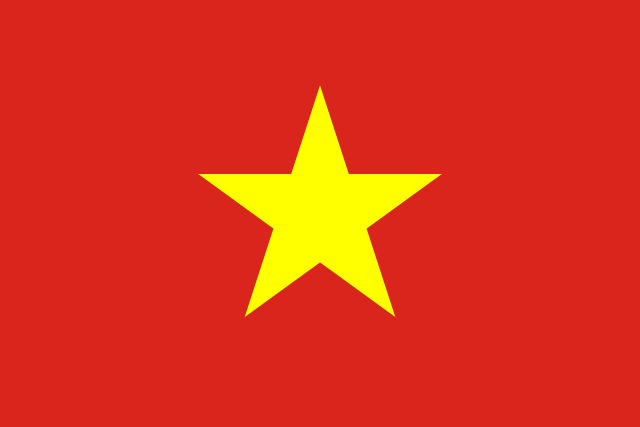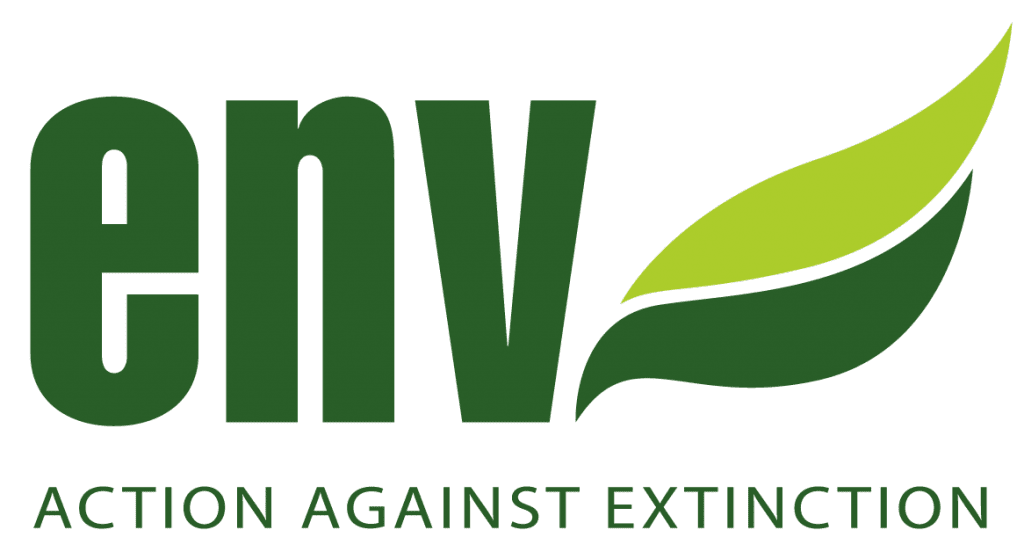Vietnam has been ranked the 16th most biologically diverse country in the world! Diverse ecosystems provide clean water, soil stability, buffers against storms and climate shocks as well as a basis for tourism. Biodiversity conservation is an essential component of achieving sustainable, resilient development. This Biodiversity Week we are celebrating Vietnam’s biodiversity status with 16 facts!
BIODIVERSITY FACT 1
On the mainland, there are 15.986 species of flora and 10% among them are endemic species. As for fauna, or more commonly known as animals, there are more than 100 endemic species of birds alone, and almost 80 types of mammals! Vietnam is home to 30 National Parks with more animal species than popular safari destinations such as Kenya and Tanzania.
BIODIVERSITY FACT 2
Vietnam’s territory expands just 330,000 square kilometers, but is home to several ecosystems such as terrestrial ecosystems, wetland ecosystems and marine ecosystems.
Terrestrial ecosystems consist of forests , agriculture and urban areas. Which in Vietnam often encroach on one another, resulting in many of the difficulties of wildlife protection. In agricultural and urban areas, ecosystems are more stressed due to artificial management and monoculture resulting in less biodiversity.
About 75% of Vietnam is mountain and hills, much of which is covered in tropical evergreen forests. These give Vietnam it’s reputation for being lush and green!
Pictured below are the rolling hills of tea plantations.
BIODIVERSITY FACT 3
Marine ecosystems in Vietnam expand across 1, 000, 000 square kilometers making marine resources abundant. An estimated 11 000 species occupying 20 marine ecosystems make up the coastline surrounding Vietnam.
BIODIVERSITY FACT 4
Wetland ecosystems in Vietnam are diverse and have unique features based on their geographical location. Wetland habitats of Vietnam include coastal mangroves, peat swamps, lagoons, coral reefs, and the sea surrounding coastal islands. In coastal mangroves you will find an array of animals including birds, mammals, amphibians, reptiles many of which migrate to these areas seasonally. Coastal lagoons are home to many species which dwell in freshwater, salt water and brackish habitats, which are common sights along the coast of Vietnam.
BIODIVERSITY FACT 5
Vietnam boasts exemplary biodiversity, but despite this wildlife tourism remains low – a near untouched resource. Wildlife trafficking however is one of the biggest black market activities in Vietnam. Trafficking is executed so efficiently, that many of Vietnam’s forests are near empty of the local animals that should be rife.
In one remote national reserve in Quang Nam province, specifically created for the Saola, also known as the Asian unicorn, (pictured below) 23, 000 fatal snares were found in a single year. As fast as they can be confiscated they are laid down. Hunting such as this is the primary threat to Vietnam’s fast diminishing biodiversity.
BIODIVERSITY FACT 6
Deforestation and urbanisation are two major threats to biodiversity in Vietnam.
Forests in Vietnam, which once covered the entire country have not been immune to the degradation seen across the world. Due to the booming economy and forever encroaching urban and agricultural areas the lush evergreen forests of Vietnam have reduced alarmingly.
Between 1943 and 1991, forest cover decreased from 67% to 29% of Vietnam’s total area. At least 12.6 million ha of forest, including 8.0 million ha in Southern Vietnam, have been lost. The northern mountains experienced the greatest decline, with forest cover dropping from 95% to 17% in only 48 years.
As the economy has boomed, demand for timber has increased exponentially – both for foreign and domestic use. In 1986 economic reforms initiated in Vietnam placed emphasis on logging as a primary economic activity, placing it as the third greatest export after agricultural and light industry products.
The greatest casualty of economic success will always be the environment, and Vietnam’s species have been at the front line.
BIODIVERSITY FACT 7
For many older generations in Vietnam, wildlife is seen not as something to be protected, but a resource for all to use. As a historically agrarian and subsitant, the people of Vietnam still see nature as a resource to be used. However with modernization and exploding populations across the country, natural wildlife resources cannot keep up with demand and beliefs such as this have resulted in the eradication of wildlife.
Cultural myths cause surviving wildlife to be exploited and abused for their parts, some are ancient, others have been adapted to suit a modern context. Some of these myths include: Bear bile for curing cancer, rhino horn for a hangover or loris (pictured) bile to ease the suffering caused by respiratory infections from Vietnam’s air pollution.
BIODIVERSITY FACT 8
Wildlife consumption as food no longer stems from necessity, but from the desire to flaunt status. In an economy that is booming and an increase in wealth among the population, symbols of wealth and status become more attractive and competitive.
Urban restaurants are largely responsible for this, on a scale that has wiped out entire populations of species. Turtles, pangolins, rats, snakes, monkeys are but a few of the animals captured, slaughtered and consumed by humans in their quest for social status.
Rice wine is a drink consumed commonly across Vietnam and is made with a variety of flavours – from plum to snake, apricot to tiger. Pictured here are seahorses that have been captured and cured to be consumed on a special occasion.

BIODIVERSITY FACT 9
Cúc Phương was the first established national park in Vietnam! Opened in 1962 in the northern province of Ninh Binh it was devoted to President Ho Chi Minh who believed that “the current destruction of our forests will lead to serious effects on climate, productivity and life.”
This park is famous for its rocky outcrops of limestone mountains, and is covered in thick forest which creates the home for some of Vietnam’s rarest wildlife. The ancient forest harbours over 122 species of reptiles and amphibians, 135 species mammals and 336 bird species which once included the Clouded Leopard, Delacour’s Langur, Owston’s Civet and Asian Black Bear, but unfortunately despite efforts are impossibly rare if not disappeared altogether in the wild. Here you can also find archeological evidence of ancient sea reptiles and prehistoric peoples.
This park has a number of rescue centres including the Endangered Primate Rescue Center, Carnivore & Pangolins Conservation Program, Turtle Conservation Centre and a Botanical Garden.
Photo taken from http://cucphuongtourism.com.vn/
BIODIVERSITY FACT 10
Cat Tien National Park, situated in the south region of Vietnam, is one of Vietnam’s most important and largest national parks protecting one of the largest areas of lowland tropical forests in the country.
Parts of the park have still not recovered from the defoliant herbicides (more commonly associated with Agent Orange) that were sprayed during the Vietnam War. Since then the park continued to suffer from logging until the 1990s.
In 1992, a population of Vietnamese Javan rhinoceros was discovered in the surrounding area which is now known as Cat Loc. Sadly the last Rhino in the park was shot in 2010 by poachers.
Despite its challenging history, the park is still home to 40 IUCN Red List species, and protects around 30% of Vietnam’s species. Huge efforts in recent decades to improve management and increase donations from international sources have lead the park to recovery and development of rescue centres for the surrounding wildlife. .
BIODIVERSITY FACT 11
Up next is Phong Nha-Kẻ Bàng National Park, part of the Annamites eco-region. 92.2% is covered with primary forest and it is also home to Son Doong Cave – the world’s largest natural cave. It’s so big it has its own river, jungle and climate.
As one of the best preserved parks and least touched by development, Phong Nha-Kẻ Bàng has earned a place as a UNESCO World Heritage Site.
Sixty-six animal species found here are listed in the Vietnam’s Red Data Book and twenty three are listed in the IUCN Red List of Threatened Animals. This impressive park is home to the largest number of Vietnam’s langur species and has 10 species and subspecies of other endangered primates such as macaques and gibbon. Ten animal species never seen before in Vietnam were discovered by scientists in this national park.
The park is also famous for its plethora of caves and grottos which has attracted much tourist attention in recent years. The increased traffic has resulted in pollution and degradation to the natural spectacles that make this park such a treasure. Ethical tourism is key to preserving habitats and biodiversity!
BIODIVERSITY FACT 12
Cat Ba National Park is situated in northern Vietnam and is located in a group of some 366 islands of the Cat Ba Archipelago.
This UNESCO world Heritage Site is home to one of the world’s rarest primates, the white headed langur, otherwise known as the Cat Ba Langur and doesn’t fail to deliver on it’s biodiversity. This park is unique in housing a great variety of ecosystems such as tropical rain forest on karst mountains, mangroves, coral reefs, sea grass beds, caves and grottos. It is world famous and attracts vast numbers of tourists annually.
BIODIVERSITY FACT 13
Say hello to the Vietnamese Mossy Frog!
Despite its frightening appearance, this amphibian scares quite easily! When startled, this species will curl into a ball and play dead.
Even though these frogs are well camouflaged, they’re still caught by humans due to their demand in the international pet trade. But we know they’re so much more valuable in the wild! At different stages of their life cycle they play both predator and prey, maintaining the delicate balance of their habitats which are already threatened by encroaching urban and human activity.
BIODIVERSITY FACT 14
The Great Hornbill (Buceros bicornis) is an impressive bird! The heaviest and most brightly coloured of the hornbill family, it boasts a bright black and yellow casque on the top of its head. It’s seems to serve no other purpose than sexual selection, although it gives the Great Hornbill it’s distinctive appearance.
On May 19th, a local man in Thua Thien Hue province contacted ENV after a strange bird flew into his garden and became entangled in his hencoop. The man had never seen this bird before, so after untangling the struggling bird, he searched the Internet and quickly found that it was a great hornbill (Buceros bicornis).

The great hornbill is an endangered species, protected under Decree 64 and Group IB of Decree 06 by Vietnamese law. ENV’s crime unit contacted Phu Loc District FPD immediately and urged a timely response due to the animal’s endangered status. FPD received the bird and are preparing to release it back into nature! What a perfect way to celebrate Biodiversity Week!
BIODIVERSITY FACT 15
The last Javan rhino in Vietnam was poached in 2010. It’s carcass was found in the Cat Tien National park with it’s horn hacked off.
Now all remaining 58-68 individuals of Javan rhino live in Ujung Kulon National Park in Indonesia.
Organizations around the world, such as Save the Rhino International and International Rhino Foundation, are fighting to preserve these majestic creatures because every animal plays an integral part in our complex ecosystems, whether minute or monolithic.
BIODIVERSITY FACT 16
The largest fish on Earth, the whale shark is a docile member of the shark family. Found in warm seas around the world, this massive vertebrate can regularly be spotted in the South China Sea which wraps itself around Vietnam.
These sharks are mostly threatened by fishermen, getting caught in nets as they try to feed or being struck by vessels when close to the surface. Unlike their more feisty cousins, they are not hunted for food, which is a relief considering the popularity of dishes such as shark fin across Vietnam and Southeast Asia. Sadly however, they are still endangered and the extinction of these gentle giants would be a great loss to the biodiversity of the seas.
















